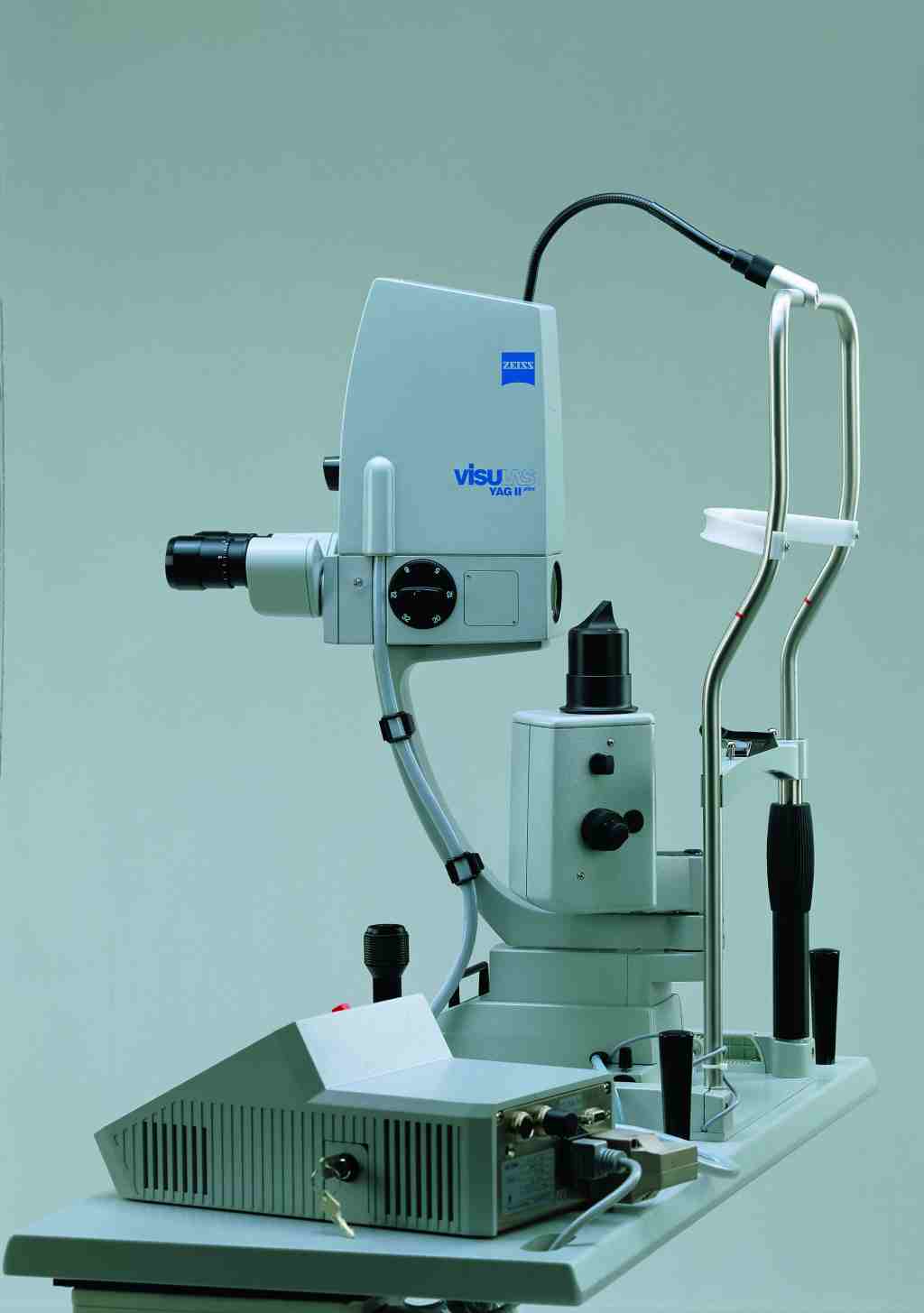
LASER THERAPY
Despite the fact that the majority of ophthalmologists has never heard of laser treatments aimed at the elimination of vitreous floaters, several studies and a significant literature do exist.
The first studies on the use of a YAG laser for vitreolysis were carried out by one of the pioneers of laser ophthalmology, Prof. Frank Fankhouser.
A respected authority in the medical world, author of several studies concerning laser treatment of cataract, he explored the possibility of using a YAG laser for the treatment of vitreous floaters.
The first published study in this field goes back to 1985, “Vitreolysis with the Q-switched laser", published on "Arch Ophthalmology". This study reported 10 cases of vitreous floaters perfectly solved by means of laser incision of the vitreal membranes.
Other studies followed, mostly European, published in the principal journals of ophthalmology. The section “References” list the main publications on the subject of vitreous floaters.
Every publication includes a study on a significant number of treatments on patients affected by vitreal opacities. These studies report encouraging results with very high percentages of success.
Unfortunately, the method is not conclusive. Its applicability varies depending on the type of floaters affecting the patient. Generally, patients with opacities that are treatable (see section "Tractability"), the improvement is considerable, even if not always complete.
Although encouraging studies started nearly 20 years ago have demonstrated the feasibility of a therapy for the vitreous floaters, the medical establishment has never shown too much interest.
Beside a limited number of researchers, the majority of the world-wide ophthalmologists either does not seem to know this literature or considers that a laser treatment to cure floaters is dangerous.
This reluctance is in part to be explained with the attitude of indifference, already highlighted in the previous sections, towards a problem not considered pathological and consequently of "insufficient clinical importance".
This indifference has certainly not helped the limited ongoing research, discouraging further studies.
Some ophthalmologists, even when open to the problem of vitreal opacities and aware of the existence of the YAG laser therapy, advise against this treatment considering dangerous the effects on the retina of the energy pulse emitted from the laser.
Modern YAG lasers (nanosecond lasers) emit impulses too dangerous for the retina as they could induce detachment.
In the 80s and early 90s, pico-second lasers were commercially available, able to emit 1000 impulses in one second each of the duration of a thousandth of billionth of second (10-12 sec), specifically designed for the treatment of cataracts.
These lasers, called ISL (Intelligent Surgical Laser), although proving to be ineffective for the treatment of cataracts, offered great safety for the treatment of vitreal opacities as the emitted impulse was not dangerous to the retina.
Some doctors have reported that the use of laser for the treatment of the vitreal floaters was very common in the 80s, but then remarkably decreased as the original equipment gradually disappeared .
During mid of the 90s, the manufacturer of ISL lasers was bought by Intralase, a company that only produces laser for refractive surgery, and the latest model of such lasers became unavailable . Today, ISL lasers are not produced anymore.
The few doctors that today offer treatment for the vitreous floaters use a YAG laser for capsulotomy (i.e. for the secondary cataracts) specially customised to operate in the vitreous. Despite this, they have never reported retinal problems occurring in their patients.
Below, we give some information regarding the most established ophthalmologists who carry out YAG laser treatment on vitreous floaters .
COMING SOON...